Active ingredients: Nitroglycerin
TRINITRINA coated tablets NITROGLYCERIN 0.3mg
Trinitrine package inserts are available for pack sizes:- TRINITRINA coated tablets NITROGLYCERIN 0.3mg
- TRINITRINA 5mg / 1.5ml concentrate for solution for infusion
- TRINITRINE 50 mg / 50 ml concentrate for solution for infusion
Why is Trinitrina used? What is it for?
Pharmacotherapeutic group
Vasodilator used in heart disease (C01DA02).
Therapeutic indications
Treatment of the acute attack of angina pectoris.
Contraindications When Trinitrine should not be used
- shock
- cardiogenic shock, unless adequate aortic diastolic pressure is maintained
- hypotensive state in acute myocardial infarction with low filling pressure
- severe hypotension (systolic blood pressure)
- severe hypovolemia
- increased intracranial pressure, head trauma and cerebral hemorrhage
- myocardial insufficiency due to obstruction (e.g. in the presence of aortic or mitral stenosis or constrictive pericarditis)
- obstructive hypertrophic cardiomyopathy
- toxic pulmonary edema
- severe anemia
- closed-angle glaucoma
- generally contraindicated in pregnancy and lactation and in pediatric age
- in combination with sildenafil (see section "Interactions")
- hypersensitivity to organic nitrates and / or to one of the excipients
Precautions for use What you need to know before taking Trinitrin
The efficacy of nitroglycerin taken sublingually in patients with congestive heart failure has not been established. Therefore, careful clinical or haemodynamic monitoring should be performed in such patients for the possibility of hypotension and tachycardia.
Severe hypotension, especially orthostatic, can occur after taking even small doses of nitroglycerin. Therefore, the drug should be used with caution in patients with hypovolaemia or pre-existing hypotension. Hypotension caused by nitroglycerin may be accompanied by paradoxical bradycardia and increased anginal pain.
Nitrate therapy may aggravate angina in patients with hypertrophic cardiomyopathy. Use with caution in patients with severe anemic hypoxemia, as the biotransformation of nitroglycerin is reduced in such patients.
Trinitrine coated tablets should be discontinued if visual disturbances (blurred vision), or dry mouth appear. Excessive dosage of nitroglycerin can cause severe headache. Only the minimum dose necessary to relieve the anginal attack should be taken. acute. Excessive use of nitroglycerin can lead to drug intolerance.
Trinitrine coated tablets should be taken sublingually and not swallowed. Swallowing the tablets is not harmful, but cancels the therapeutic effect.
Trinitrine coated tablets contain anhydrous glucose, lactose and sucrose. Patients with rare forms of glucose-galactose malabsorption, rare hereditary disorders of galactose or fructose intolerance, lactase deficiency or sucrase isomaltase should not take the medicine.
Interactions Which drugs or foods can modify the effect of Trinitrine
Additive hypotensive effects may be observed in patients taking antihypertensive drugs, β-adrenergic blockers, phenothiazines and nitrates. Marked orthostatic hypotension has been noted when calcium-blocking drugs and organic nitrates, such as nitroglycerin, are administered together.
The concomitant use of alcohol and nitrates can cause hypotension.
The vasodilatory and haemodynamic effects of nitroglycerin can be enhanced by concomitant administration of aspirin.
The peripheral vasodilation of nitroglycerin is hindered by the concomitant administration of the anti-inflammatory indomethacin.
Tricyclic antidepressants (amitriptyline, desipramine, doxepin, and others) and anticholinergic drugs can cause dry mouth and decreased salivary secretion. This can make dissolution of the sublingual nitroglycerin difficult. An increase in salivation with artificial saliva products can prove beneficial in such cases.
Oral administration of nitroglycerin markedly decreases the first pass metabolism of ergotamine and therefore increases the oral bioavailability of the latter. Ergotamine is known to trigger anginal seizures. Therefore, patients taking sublingual nitroglycerin should not take ergotamine and related drugs, or be monitored closely for symptoms of ergotism if it is not possible to avoid taking derivatives. ergot.
Sildenafil potentiates the hypotensive effects of nitrates and, therefore, its co-administration with organic nitrates, such as nitroglycerin, is contraindicated (see "Contraindications").
A decrease in the therapeutic effect of sublingual nitroglycerin may be observed in patients taking long-acting nitrates.
Interactions with laboratory tests
Nitrates can interfere with the Zlatkis / Zak colorimetric assay causing a false result of decreased plasma cholesterol.
Tell your doctor or pharmacist if you are taking or have recently taken any other medicines, even those without a prescription.
Warnings It is important to know that:
Pregnancy and breastfeeding
There are no adequate clinical and epidemiological data on the use of nitroglycerin in pregnancy. Animal studies are insufficient to establish the effects of sublingual nitroglycerin on pregnancy, embryonic and / or postnatal development, and parturition. The potential risk in humans is unknown.
Trinitrine coated tablets should not be used during pregnancy, especially in the first three months, unless strictly necessary.
It is not known whether nitroglycerin is excreted in human milk. Since this possibility cannot be ruled out, particular caution should be exercised when nitroglycerin is taken by a breastfeeding patient.
Effects on ability to drive and use machines
Trinitrine coated tablets, due to some side effects (orthostatic hypotension, nausea, dizziness), may have a major influence on the ability to drive or use machines. These side effects can reduce the person's ability to react.
In case of ascertained intolerance to sugars, contact your doctor before taking the medicine.
Dosage and method of use How to use Trinitrina: Dosage
Generally one tablet is sufficient to resolve the painful symptoms or prevent the angina crisis. If necessary, a second tablet can be taken after a few minutes. The tablets should be crushed with the teeth and left to dissolve under the tongue. harmful, but cancels the therapeutic effect.
If you have any further questions on the use of this medicine, ask your doctor or pharmacist.
Overdose What to do if you have taken too much Trinitrine
Signs and symptoms are mainly due to marked vasodilation and methemoglobinemia. The manifestations are as follows: hypotension and reflex tachycardia, cold and pale skin, headache, dizziness, mental confusion, visual disturbances, nausea and vomiting with colicky abdominal pain possibly associated with watery diarrhea. Palpitations, syncope and cardiovascular collapse.
The treatment of symptoms due to marked and generalized hypotension requires the positioning of the intoxicated patient in the Trendelenburg position (lying down and making passive movements of the extremity) with administration of fluids intravenously. If necessary, administer alpha-adrenergic agonists (i.e. methoxamine or phenylephrine). Epinephrine and similar substances are ineffective on marked hypotension due to overdose.
Treatment of cyanosis due to methemoglobinaemia: starting from a level of 0.8 g / 100 ml of methemoglobin, the treatment will consist of intravenous administration of 1% methylene blue (1-2 mg / kg). less severe, the dose of 50 mg / kg should be administered orally Treatment in a specialized center is recommended.
In case of accidental intake of an excessive dose of the medicine, notify your doctor immediately or go to the nearest hospital.
Side Effects What are the side effects of Trinitrine
Like all medicines, this can cause side effects, although not everybody gets them.
A headache, even severe and persistent caused by cerebral vasodilation, can arise immediately after taking nitroglycerin.
Vertigo, confusion, weakness, palpitations and other manifestations of postural hypotension may be felt occasionally and in particular in subjects in an immobile orthostatic position.
In subjects particularly sensitive to the hypotensive effects of nitrates, nausea, vomiting, diaphoresis, pallor and lipothymia may occur at therapeutic doses.
On the other hand, nitroglycerin can only rarely induce bradycardia and signs of hypervagotonia. Furthermore, in patients treated with nitrates, the onset of skin redness and exfoliative dermatitis is possible.
Undesirable effects such as flushing, headache and postural hypotension may limit therapy, especially in the early stages or when angina is severe or when patients are hypersensitive to the effects of nitrates. Headache usually subsides during treatment.
Adverse events reported are listed below, by organ class.
- Disorders of the blood and lymphatic system
Rare: methemoglobinemia
- Disorders of the nervous system
dizziness, headache
- Eye disorders
blurred vision
- Heart ailments
tachycardia, palpitations, paradoxical bradycardia, syncope
- Vascular disorders
postural hypotension
- Gastrointestinal disorders
nausea, digestive disorders
- Skin and subcutaneous disorders
rash
- General disorders and alterations of the administration site
General disorders: hot flashes with erythema, weakness, sweats
Very rare: cyanosis
Alteration of the administration site
Burning, erythema.
Methemoglobinemia has been associated with prolonged or high dose treatments.
If any of the side effects gets serious, or if you notice any side effects not listed in this leaflet, please tell your doctor or pharmacist.
Expiry and Retention
Store at a temperature not exceeding 25 ° C.
Do not use the medicine after the expiry date which is stated on the package.
The expiry date refers to the product in intact and correctly stored packaging.
Keep this medicine out of the reach and sight of children.
Medicines should not be disposed of via wastewater or household waste.
Ask your pharmacist how to throw away medicines you no longer use. This will help protect the environment.
Composition
Each coated tablet contains:
Active principle: nitroglycerin 0.3 mg
Excipients: sucrose, corn starch, lactose monohydrate, mannitol, talc, microcrystalline cellulose, silica, titanium dioxide, anhydrous glucose, gum arabic, potato starch, magnesium carbonate, magnesium stearate, calcium stearate, gelatin, polyvinyl alcohol, vanillin, methyl p -hydroxybenzoate.
Pharmaceutical form and content
Coated tablets. 2 blisters of 35 tablets.
Source Package Leaflet: AIFA (Italian Medicines Agency). Content published in January 2016. The information present may not be up-to-date.
To have access to the most up-to-date version, it is advisable to access the AIFA (Italian Medicines Agency) website. Disclaimer and useful information.
01.0 NAME OF THE MEDICINAL PRODUCT
TRINITRINA 0.3 MG COATED TABLETS
02.0 QUALITATIVE AND QUANTITATIVE COMPOSITION
Each coated tablet contains:
Active principle: nitroglycerin 0.3 mg.
For excipients, see section 6.1.
03.0 PHARMACEUTICAL FORM
Coated tablets
04.0 CLINICAL INFORMATION
04.1 Therapeutic indications
Treatment of the acute attack of angina pectoris.
04.2 Posology and method of administration
Generally one tablet is sufficient to resolve the painful symptoms or to prevent the angina crisis. If necessary, a second tablet can be taken after a few minutes.
The tablets should be crushed with the teeth and left to dissolve under the tongue. Swallowing the tablets is not harmful, but cancels the therapeutic effect.
04.3 Contraindications
- shock
- cardiogenic shock, unless adequate aortic diastolic pressure is maintained
- hypotensive state in acute myocardial infarction with low filling pressure
- severe hypotension (systolic pressure)
- severe hypovolemia
- increased intracranial pressure, head trauma and cerebral hemorrhage
- myocardial insufficiency due to obstruction (e.g. in the presence of aortic or mitral stenosis or constrictive pericarditis)
- obstructive hypertrophic cardiomyopathy
- toxic pulmonary edema
- severe anemia
- closed angle glaucoma
- generally contraindicated in pregnancy and lactation and in pediatric age in combination with sildenafil (see section "Interactions with other medicinal products and other forms of interaction")
- hypersensitivity to organic nitrates and / or to one of the excipients
04.4 Special warnings and appropriate precautions for use
The efficacy of nitroglycerin taken sublingually in patients with congestive heart failure has not been established. Therefore, careful clinical or haemodynamic monitoring should be performed in such patients for the possibility of hypotension and tachycardia.
Severe hypotension, especially orthostatic, can occur after taking even small doses of nitroglycerin. Therefore, the drug should be used with caution in patients with hypovolaemia or pre-existing hypotension. Hypotension caused by nitroglycerin may be accompanied by paradoxical bradycardia and increased anginal pain.
Nitrate therapy may aggravate angina in patients with hypertrophic cardiomyopathy. Use with caution in patients with severe anemic hypoxemia, as the biotransformation of nitroglycerin is reduced in such patients.
Trinitrine coated tablets should be discontinued if visual disturbances (blurred vision), or dry mouth appear. Excessive dosage of nitroglycerin can cause severe headache.
Only the minimum dose necessary to relieve the acute anginal attack should be taken. Excessive use of nitroglycerin can lead to drug intolerance.
Trinitrine coated tablets should be taken sublingually and not swallowed. Swallowing the tablets is not harmful, but cancels the therapeutic effect.Trinitrine coated tablets contain anhydrous glucose, lactose and sucrose. Patients with rare forms of glucose-galactose malabsorption, rare hereditary disorders of galactose or fructose intolerance, lactase deficiency or sucrase isomaltase should not take the medicine.
04.5 Interactions with other medicinal products and other forms of interaction
Additive hypotensive effects may be observed in patients taking antihypertensive drugs, α-adrenergic blockers, phenothiazines and nitrates. Marked orthostatic hypotension has been noted when calcium-blocking drugs and organic nitrates, such as nitroglycerin, are administered together.
The concomitant use of alcohol and nitrates can cause hypotension.
The vasodilatory and haemodynamic effects of nitroglycerin can be enhanced by concomitant administration of aspirin.
The peripheral vasodilation of nitroglycerin is hindered by the concomitant administration of the anti-inflammatory indomethacin.
Tricyclic antidepressants (amitriptyline, desipramine, doxepin, and others) and anticholinergic drugs can cause dry mouth and decreased salivary secretion. This can make dissolution of the sublingual nitroglycerin difficult. An increase in salivation with artificial saliva products can prove beneficial in such cases.
Oral administration of nitroglycerin markedly decreases the first pass metabolism of ergotamine and therefore increases the oral bioavailability of the latter. Ergotamine is known to trigger anginal seizures. Therefore, patients taking sublingual nitroglycerin should not take ergotamine and related drugs, or be monitored closely for symptoms of ergotism if it is not possible to avoid taking derivatives. ergot.
Sildenafil potentiates the hypotensive effects of nitrates and, therefore, its co-administration with organic nitrates, such as nitroglycerin, is contraindicated (see "Contraindications").
A decrease in the therapeutic effect of sublingual nitroglycerin may be observed in patients taking long-acting nitrates.
Interactions with laboratory tests
Nitrates can interfere with the Zlatkis / Zak colorimetric assay causing a false result of decreased plasma cholesterol.
04.6 Pregnancy and breastfeeding
There are no adequate clinical and epidemiological data on the use of nitroglycerin in pregnancy. Animal studies are insufficient to establish the effects of sublingual nitroglycerin on pregnancy, embryonic and / or postnatal development, and parturition (see paragraph "Preclinical safety data"). The potential risk in humans is unknown.
Trinitrine coated tablets should not be used during pregnancy, especially in the first three months, unless strictly necessary.
It is not known whether nitroglycerin is excreted in human milk. Since this possibility cannot be ruled out, particular caution should be exercised when nitroglycerin is taken by a breastfeeding patient.
04.7 Effects on ability to drive and use machines
Trinitrine coated tablets, due to some side effects (orthostatic hypotension, nausea, dizziness), may have a major influence on the ability to drive or use machines. These side effects can reduce the person's ability to react.
04.8 Undesirable effects
A headache, even severe and persistent caused by cerebral vasodilation, can arise immediately after taking nitroglycerin.
Vertigo, confusion, weakness, palpitations and other manifestations of postural hypotension may be felt occasionally and in particular in subjects in an immobile orthostatic position.
In subjects particularly sensitive to the hypotensive effects of nitrates, nausea, vomiting, diaphoresis, pallor and lipothymia may occur at therapeutic doses.
On the other hand, nitroglycerin can only rarely induce bradycardia and signs of hypervagotonia. Furthermore, in patients treated with nitrates, the onset of skin redness and exfoliative dermatitis is possible.
Undesirable effects such as flushing, headache and postural hypotension may limit therapy, especially in the early stages or when angina is severe or when patients are hypersensitive to the effects of nitrates. Headache usually subsides during treatment.
Adverse events reported are listed below, by organ class. Disorders of the blood and lymphatic system
- Rare: methemoglobinemia
Disorders of the nervous system
- dizziness, headache
Eye disorders
- blurred vision
Heart ailments
- tachycardia, palpitations, paradoxical bradycardia, syncope
Vascular disorders
- postural hypotension
Gastrointestinal disorders
- nausea, digestive disorders
Skin and subcutaneous disorders
- rash
General disorders and alterations of the administration site
- General disorders: hot flashes with erythema, weakness, sweats
- Very rare: cyanosis
Alteration of the administration site
- Burning, erythema
Methemoglobinemia has been associated with prolonged or high dose treatments.
04.9 Overdose
Signs and symptoms are mainly due to marked vasodilation and methemoglobinemia. The manifestations are as follows: hypotension and reflex tachycardia, cold and pale skin, headache, dizziness, mental confusion, visual disturbances, nausea and vomiting with colicky abdominal pain possibly associated with watery diarrhea. Palpitations, syncope and cardiovascular collapse.
The treatment of symptoms due to marked and generalized hypotension requires the positioning of the intoxicated patient in the Trendelenburg position (lying down and making passive movements of the extremity) with administration of fluids intravenously. If necessary, administer alpha-adrenergic agonists (i.e. methoxamine or phenylephrine). Epinephrine and similar substances are ineffective on marked hypotension due to overdose. Treatment of cyanosis due to methemoglobinemia: Starting from a level of 0.8 g / 100 ml of methemoglobin, the treatment will consist of intravenous administration at 1. % methylene blue (1-2 mg / kg). In less severe cases, the dose of 50 mg / kg should be administered orally. Treatment in a specialized center is recommended.
05.0 PHARMACOLOGICAL PROPERTIES
05.1 Pharmacodynamic properties
Pharmacotherapeutic group: vasodilators used in heart disease, organic nitrates.
ATC code: C01 DA 02.
Nitroglycerin has a relaxing effect on the smooth muscles of the human organism. In the vascular compartment it acts mainly on the venous system and on the large coronary arteries, with a greater effect on the former.
In angina pectoris the main mechanism of action of nitroglycerin is represented by the increase in venous capacitance which determines a decreased blood return to the heart. Therefore, the pressure of the left ventricle at the end of diastole (pre-load) and the filling volume decrease , resulting in a reduced oxygen demand of the myocardium. This reduction in oxygen consumption is accompanied by the improvement of myocardial perfusion resulting from the antispastic action on the coronary epicardial branches and the redistribution of flow in favor of the subepicardial layers of the heart muscle. In addition, nitroglycerin dilates atherosclerotic stenosis in the case of eccentric atheroma and produces relaxation of both spontaneous and ergonovine-induced vasospasm.
At the systemic level, nitroglycerin exerts a dose-dependent dilating effect on the arterial vascular system; this determines the reduction of peripheral vascular resistance (afterload) and the systolic tension of the left ventricular wall, both events contributing to the decrease in myocardial oxygen consumption.
Cynical correlates
In correlation with the clinical improvement of angina pectoris, digital plethysmography reveals that the onset of the vasodilatory effect occurs approximately 1 minute after the sublingual administration of nitroglycerin and reaches its maximum approximately 5 minutes after administration. This effect persists for at least 1 minute. 25 minutes after taking.
Mechanism of action
Nitroglycerin originates the free radical NO (nitric oxide) which activates guanyl cyclase, with a consequent increase in cyclic GMP in smooth muscle and other tissues. This leads to a dephosphorylation of the myosin light chains, which regulates the state of contraction of the smooth muscle, which results in vasodilation.
05.2 "Pharmacokinetic properties
Absorption:
Nitroglycerin is rapidly absorbed after sublingual administration of Trinitrine coated tablets. Peak plasma concentrations occur 6-7 minutes after dosing (see Table). Maximal plasma concentration (Cmax) and area under the concentration-time curve (AUC) increase in a dose-proportional manner. The absolute bioavailability of nitroglycerin after taking Trinitrine coated tablets is about 40% and tends to vary in relation to factors that influence the absorption of the drug, such as sublingual hydration and metabolism at the level of the buccal mucosa.
Table
Distribution:
The volume of distribution (Vd) of nitroglycerin after intravenous administration is 3.3 L / kg.
At plasma concentrations between 50 and 500 ng / ml, the binding of nitroglycerin to plasma proteins is approximately 60%, while that of 1,2- and 1,3-dinitroglycerin (the two major metabolites of nitroglycerin) is by 60% and 30%, respectively.
Metabolism:
The active principle is rapidly metabolized in the liver by a glutathione-dependent organic nitrate reductase. Also, you studyin vitro with human erythrocytes they have shown that the red blood cell is also the site of biotransformation of nitroglycerin by means of a sulfhydryl-dependent enzymatic process and an interaction with reduced hemoglobin.
The amount of reduced hemoglobin present in human erythrocytes appears to play a primary role in their metabolic activity, therefore, caution should be exercised when taking nitroglycerin in patients with anemia (see section "Special warnings and appropriate precautions for use"). on animals it has been shown that extrahepatic vascular tissues (femoral vein, inferior vena cava, aorta) also play an important role in the metabolism of nitroglycerin, which explains the high systemic clearance of nitrates. in vitro that the biotransformation of nitroglycerin occurs at the same time as the relaxation of the smooth vascular muscle; this observation is consistent with the hypothesis that the biotransformation of nitroglycerin (into NO) is the mechanism of the vasodilation induced by the drug.
Elimination:
Plasma concentrations of nitroglycerin drop rapidly after dosing, with a mean elimination half-life of 2-3 minutes. Clearance (13.8 L / min) far exceeds the hepatic blood flow.
05.3 Preclinical safety data
Non-clinical data reveal no risk for humans based on conventional studies of safety pharmacology, repeated dose toxicity, genotoxicity, carcinogenic potential, reproductive toxicity.
Single dose toxicity: The LD50 of oral nitroglycerin is 105 mg / kg in rats and 15 mg / kg in mice.
Repeated dose toxicity: In chronic toxicity studies in growing albino rats, a dose of 300 mg / kg administered for 6 months by the epicutaneous route did not result in any significant changes in body growth, blood count, or other biological parameters. furthermore, no histological alteration of the organs examined was observed.At a dose of 825 mg / kg administered intraperitoneally in the rat for 33 days, a decrease in body weight was observed.
Mute genesis: Although nitroglycerin was weakly mutagenic in the Ames test, there was no evidence of genotoxicity in the assays. in vivo (dominant lethal assay) in male rats treated with oral doses up to 363 mg / kg, or in cytogenetic tests ex vivo in murine and canine tissues.
Carcinogenesis: Rats treated with very high doses of nitroglycerin (363 mg / kg / day in males and 434 mg / kg / day in females) for 2 years showed the onset of hepatocellular carcinomas and interstitial cell tumors of the testis. Mice treated with 1022 (males) or 1058 (females) mg / kg / day and rats treated with 31.5 (males) or 38.1 (females) mg / kg / day for the same period showed no tumors related to the treatment. throughout the life cycle of 1058 mg / kg / day of nitroglycerin did not cause any increase in the incidence of neoplasms.
Reproductive toxicity: Reproductive toxicity and teratogenicity studies have not been conducted with sublingually administered nitroglycerin. However, teratogenic studies conducted in rats and rabbits with topical nitroglycerin at doses up to 80 mg / kg / day and 240 mg / kg / day, respectively, did not reveal any fetal harm.
06.0 PHARMACEUTICAL INFORMATION
06.1 Excipients
Sucrose, corn starch, lactose monohydrate, mannitol, talc, microcrystalline cellulose, silica, titanium dioxide, anhydrous glucose, gum arabic, potato starch, magnesium carbonate, magnesium stearate, calcium stearate, gelatin, polyvinyl alcohol, vanillin, p- methyl hydroxybenzoate.
06.2 Incompatibility
Not relevant.
06.3 Period of validity
2 years.
06.4 Special precautions for storage
Store at a temperature not exceeding 25 ° C.
06.5 Nature of the immediate packaging and contents of the package
PVC / PVDC 60 / Aluminum blister
2 blisters of 35 tablets.
06.6 Instructions for use and handling
No special instructions.
07.0 MARKETING AUTHORIZATION HOLDER
ACARPIA Farmaceutici srl
via Vivaio, 17
20122 MILAN (ITALY)
08.0 MARKETING AUTHORIZATION NUMBER
006035063
09.0 DATE OF FIRST AUTHORIZATION OR RENEWAL OF THE AUTHORIZATION
Renewal:
06/2010
10.0 DATE OF REVISION OF THE TEXT
06/2010


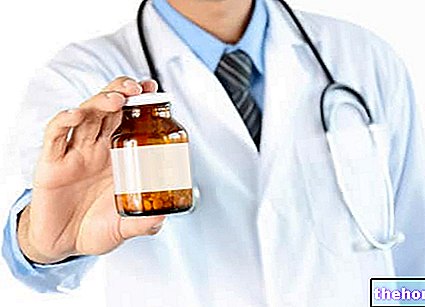
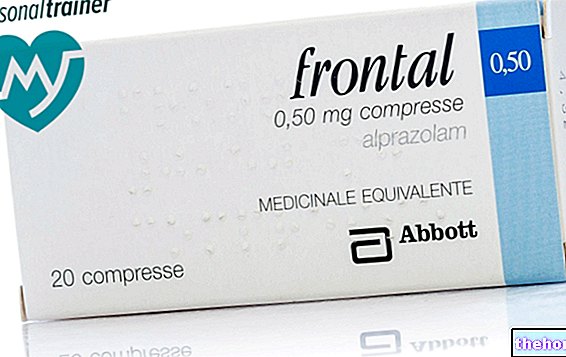
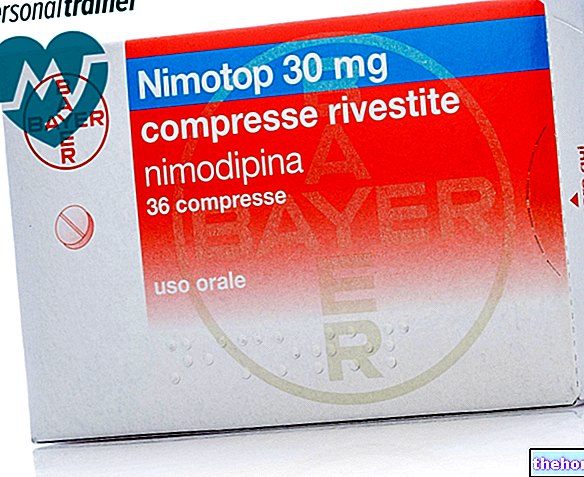
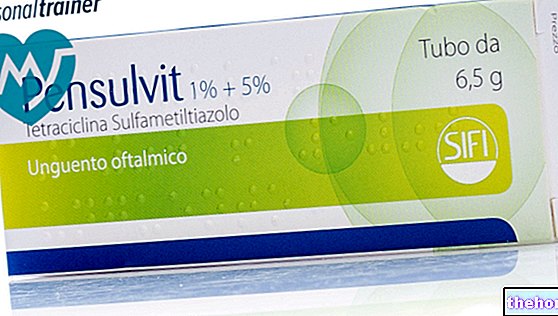
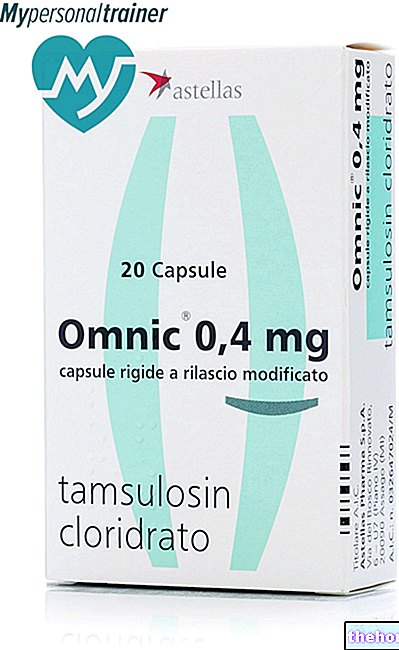
















-nelle-carni-di-maiale.jpg)




